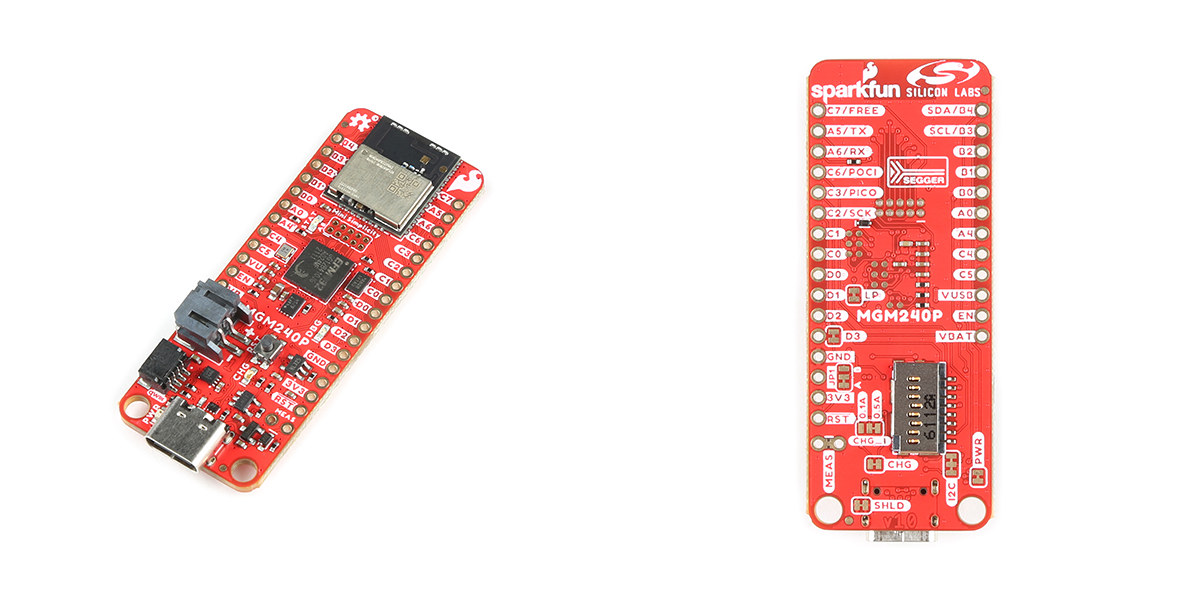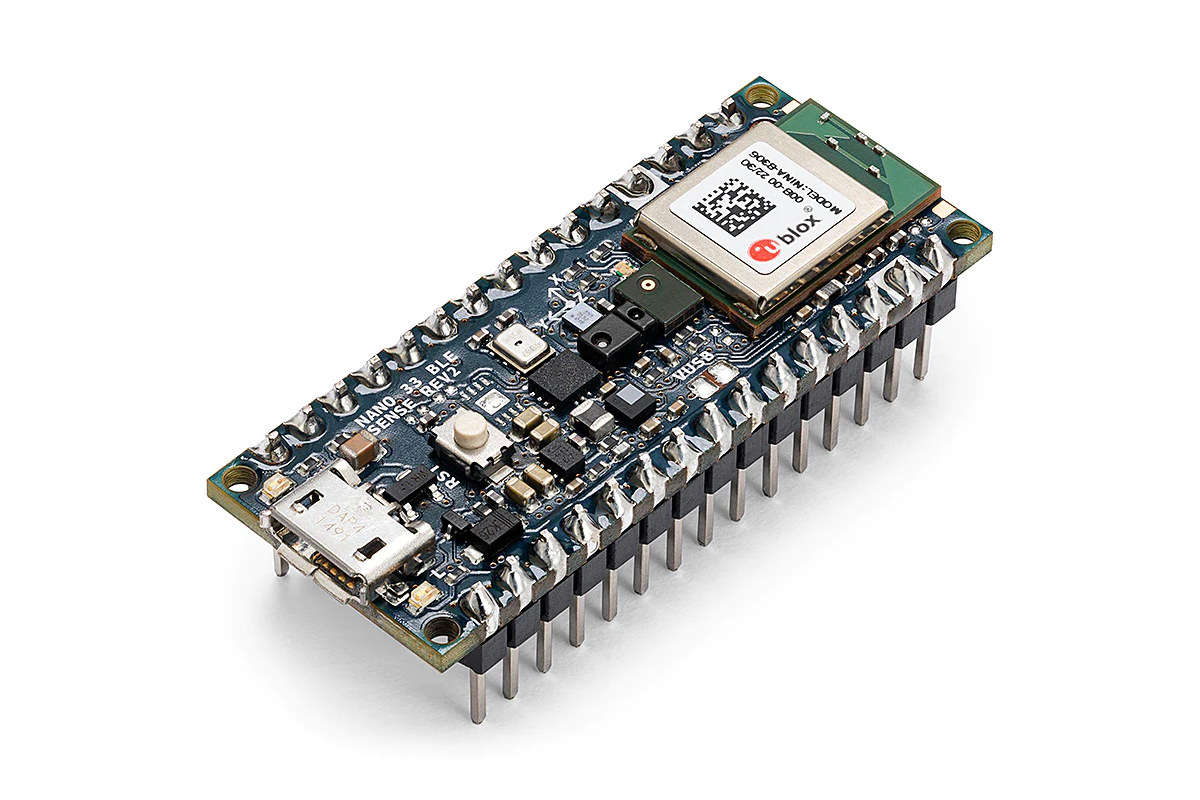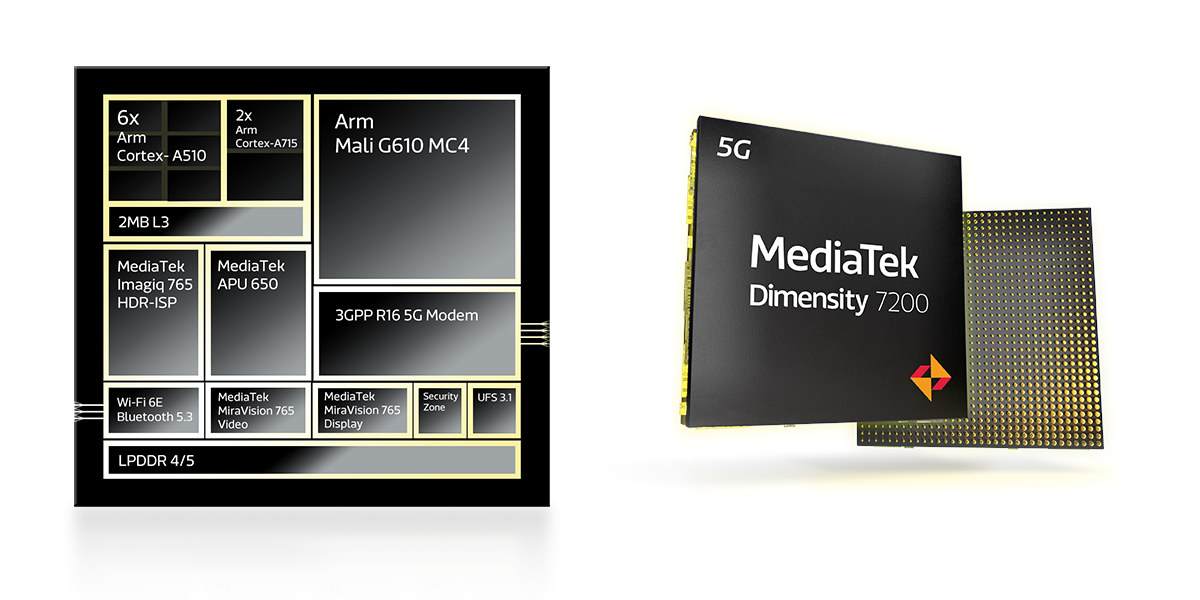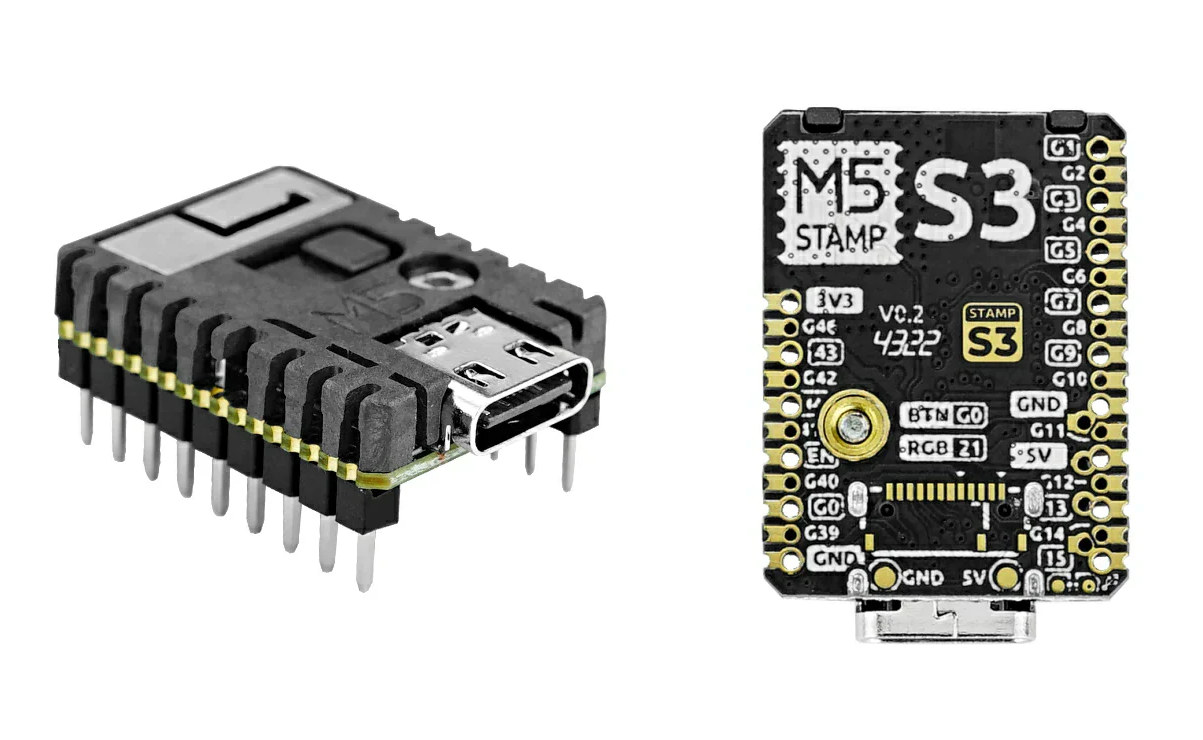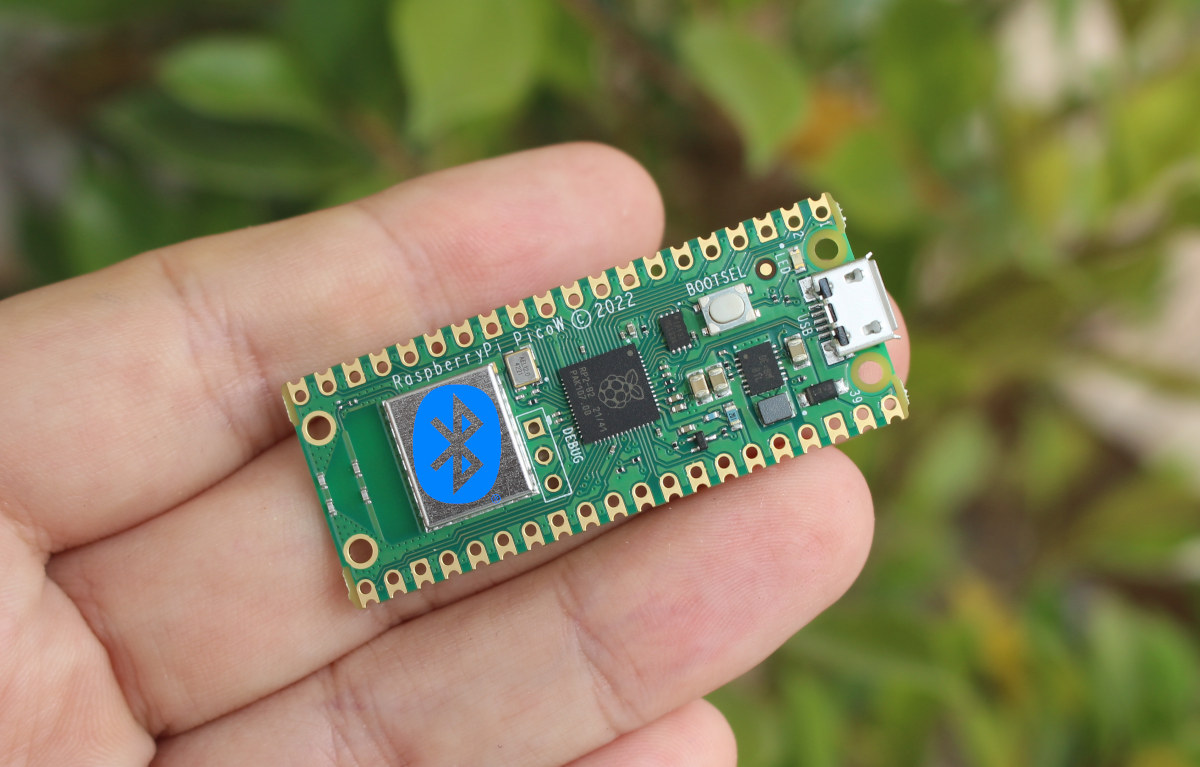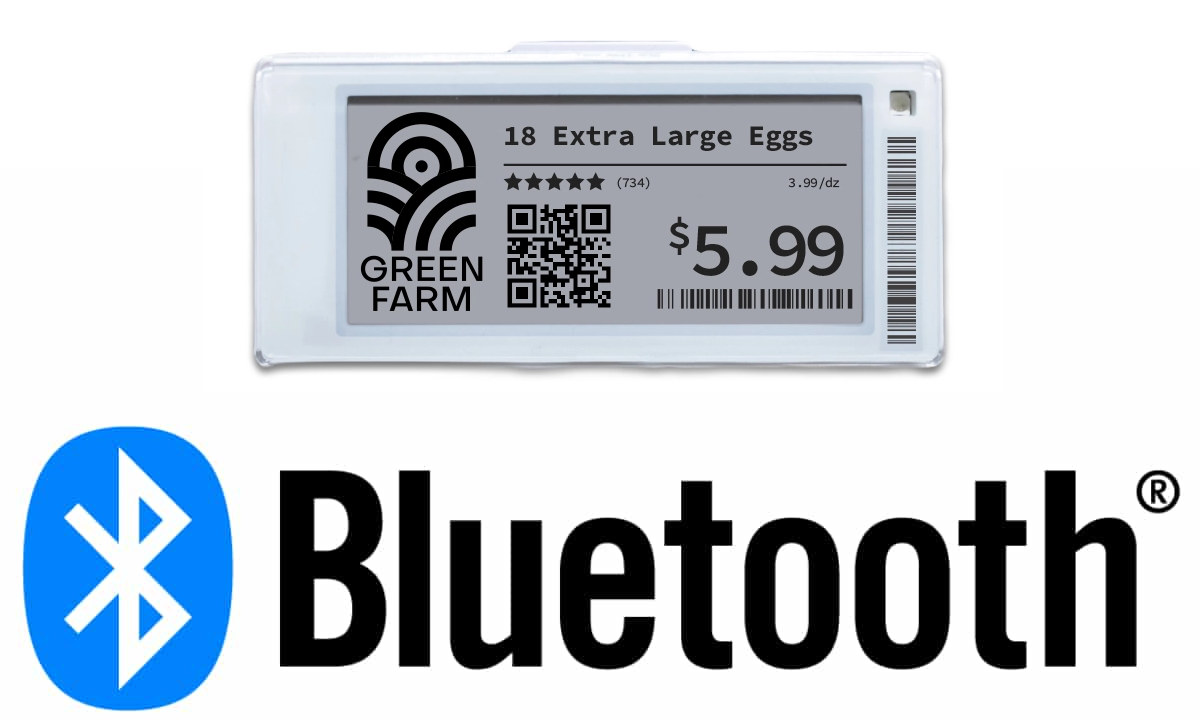SparkFun Thing Plus Matter – MGM240P board targets the development of applications using the Matter IoT protocol and features the MGM240P module based on Silicon Labs EFR32MG24 Arm Cortex-M33 wireless microcontroller with an 802.15.4 radio for Zigbee and OpenThread plus a Bluetooth Low Energy (BLE) 5.3 radio. The board also offers two rows of I/Os for upto 21 GPIOs and a Qwiic connector for expansion, another EFRM32 MCU acting as a J-link debugger, a microSD card, and can be powered via USB-C or a LiPo battery. SparkFun Thing Plus Matter – MGM240P specifications: MGM240P wireless module SoC – Silicon Labs EFR32MG24 microcontroller CPU – 32-bit Arm Cortex-M33 @ 39 MHz (MCU/module specs say up to 78 MHz, but maybe it’s clocked lower in this board for some reason, maybe lower power consumption?) Memory/Storage – 1536kB Flash Memory, 256kB RAM Wireless – 802.15.4 wireless protocols (Zigbee and OpenThread) and Bluetooth Low […]
Arduino Nano 33 BLE Sense Rev2 switches to BMI270 & BMM150 IMUs, HS3003 temperature & humidity sensor
Arduino Nano 33 BLE Sense Rev2 is a new revision of the Nano 33 BLE Sense machine learning board with basically the same functionality but some sensors have changed along with some other modifications “to improve the experience of the users”. The main changes are that STMicro LSM9DS1 9-axis IMU has been replaced by two IMUs from Bosch SensorTech, namely the BMI270 6-axis accelerometer and gyroscope, and the BMM150 3-axis magnetometer, a Renesas HS3003 temperature & humidity sensor has taken the place of an STMicro HTS221, and the microphone is now an MP34DT06JTR from STMicro instead of an MP34DT05. All of the replaced parts are from STMicro, so it’s quite possible the second revision of the board was mostly to address supply issues. Arduino Nano 33 BLE Sense Rev2 (ABX00069) specifications: Wireless Module – U-blox NINA-B306 module powered by a Nordic Semi nRF52840 Arm Cortex-M4F microcontroller @ 64MHz with 1MB […]
Sparkfun NanoBeacon low power Bluetooth 5.3 beacon module supports Bosch BME280 and BMA400 sensors
Sparkfun NanoBeacon is a module equipped with InPlay IN100 NanoBeacon Bluetooth 5.3 beacon SoC, a Qwicc connector, and a few GPIOs designed to work with Bosch Sensortec BME280 3-in-1 humidity sensor, measuring humidity, air pressure, and ambient temperature, and the BMA400 ultra-low power accelerometer sensor. The IN100 NanoBeacon SoC consumes less than 650nA in sleep mode, supports proprietary, Bluetooth, Google Eddystone, and Apple iBeacon beacon modules, and offers a long range of up to several hundred meters. Sparkfun NanoBoard specifications: Bluetooth Beacon SoC – IN100 NanoBeacon SoC (See datasheet for details) Memory – 4 KB SRAM + 4 Kbit OTP memory Bluetooth 5.3 compliant Beacon Modes: Proprietary, BT, Google Eddystone, and Apple iBeacon compliant 2.4GHz RF frequency band, MedRadio band (2.36GHz) Programming-free and firmware-less design Long-range transmission: up to several hundred meters Security Authentication of beacon ID Privacy of advertising payload Power consumption Sub-uW power consumption for multi-year operation on […]
MediaTek Dimensity 7200 Armv9 Cortex-A715/A510 processor targets mainstream 5G smartphones
Manufactured with a 4nm processor, the MediaTek Dimensity 7200 is an octa-core Armv9 processor designed for mainstream smartphones. with two Cortex-A715 cores, six Cortex-A510 cores, a Mali-G610 MC4 GPU, as well as 5G, WiFi 6E, and Bluetooth 5.3 connectivity. So far, I had only seen Armv9 SoCs with a mix of Cortex-A510 “LITTLE” cores, Cortex-A710/A715 “big” core, and Cortex-X2 or Cortex-X3 “flagship cores” as found in the Dimensity 9200 processor, but the Dimensity 7200 is one of the first Armv9 processors – one other being the Snapdragon 7 Gen 1 – without a Cortex-X core in order to provide a more affordable solution. MediaTek Dimensity 7200 specifications: CPU 2x Arm Cortex-A715 up to 2.8GHz 6x Arm Cortex-A510 2MB L3 cache GPU – Arm Mali-G610 MC4 with MediaTek HyperEngine 5.0 APU – MediaTek APU 650 AI accelerator DPU/VPU – MediaTek MiraVision 765 engine for display and 4K HDR video decoding/encoding Memory […]
M5Stamp S3 WiFi and BLE IoT module offers up to 23 GPIOs through 2.54mm and 1.27mm pitch holes
M5Stamp S3, aka M5Stamp ESP32S2 or Stamp S3, is a tiny ESP32-S3 WiFi & Bluetooth LE (BLE) IoT module with a USB Type-C port, over 20 I/Os available through 2.54mm and 1.27mm pitch headers and castellated holes, and a heat-resistant cover. Many of the “new” ESP32-S3 hardware platforms launches these days are often updates from an ESP32 design, and the M5Stack’s M5Stamp S3 is no exception building on the original M5Stamp Pico, and its ESP32-C3 variants, namely M5Stamp C3 and C3U. M5Stamp S3 specifications: WiSoC – Espressif Systems ESP32-S3FN8 dual-core 32-bit Xtensa LX7 microcontroller with AI vector instructions up to 240MHz, RISC-V ULP co-processor, 512KB SRAM, 2.4GHz WiFi 4 (802.11b/g/n), Bluetooth 5.0 BLE + Mesh, 8MB flash as found in the M5Stack ATOMS3 (Lite). Connectivity 2.4 GHz WiFi 4, 20 MHz and 40 MHz bandwidth, IEEE 802.11 b/g/n protocol, up to 150 Mbps Bluetooth 5, Bluetooth Mesh, with supports for […]
Raspberry Pi Pico W gets Bluetooth support in SDK 1.5.0
The Raspberry Pi Pico W board was launched with a WiFi 4 and Bluetooth 5.2 module based on the Infineon CYW43439 wireless chip in June 2022, and I wrote a tutorial showing how to connect to WiFi a few days after the launch, but nothing about Bluetooth. That’s because while the Raspberry Pi Pico W hardware supports Bluetooth, we were told that Bluetooth was not enabled at the time, but might be at a later stage. Alasdair Allan, who is responsible for the Raspberry Pi documentation, said Bluetooth support was scheduled very soon, and the SDK 1.5.0 release of the Pico C SDK is now available with Bluetooth implemented using BTstack low footprint dual-mode Bluetooth stack. Bluetooth support is still considered Beta and the SDK 1.5.0 implements the following key features and updates: New libraries for Bluetooth Low Energy (LE) support. Bluetooth Classic support. Bluetooth Sub Band Coding (SBC) encoder […]
Bluetooth 5.4 adds electronic shelf label (ESL) support
The Bluetooth Special Interest Group (SIG) has just adopted the Bluetooth 5.4 Core Specification with features such as PAwR and EAD designed for Electronic Shelf Label (ESL) systems. The Bluetooth 5.3 Core Specification was adopted in August 2021 with various improvements, and Bluetooth 5.4 now follows with features that appear to be mainly interesting for large-scale Bluetooth networks with support for bi-directional communication with thousands of end nodes from a single access point, as would be the case for Electronic Shelf Label or Shelf Sensor systems. Four new features have been added to Bluetooth 5.4: Periodic Advertising with Responses (PAwR) – PAwR is a new Bluetooth Low Energy (LE) logical transport that provides a way to perform energy-efficient, bi-directional, communication in a large-scale one-to-many topology with up to up to 32,640 devices. Devices can also be allocated to groups allowing them to listen only to their group’s transmissions. An Electronic […]
Eoxys Xeno+ Nano ML board combines NuMicro M2354 or STM32L4 MCU with Talaria TWO ultra low power WiFi & BLE 5.0 module
Eoxys Xeno+ Nano ML is a wireless machine learning (ML) board with either Nuvoton NuMicro M2354 or STMicro STM32L4 microcontroller, InnoPhase IoT’s Talaria TWO ultra-low power Wi-Fi and BLE 5.0 module, and the Syntiant Core 2 NDP120 neural decision processor we first noticed in the Arduino Nicla Voice module a few weeks ago. The boards/modules are designed for intelligent and secure IoT devices for smart home, industrial, and medical automation applications, and the company claims it can be used in Wi-Fi IoT sensors with up to 10+ years thanks to the low-power chips and circuitry used in the design. Eoxys Xeno+ Nano ML specifications: General purpose MCU (one or the other) STMicro STM32L4 Arm Cortex-M4 microcontroller at 80MHz with 1MB flash, 128KB/352KB SRAM Nuvoton NuMicro M2354 Arm Cortex-M23 microcontroller at 96MHz with 1MB flash, 128KB SRAM. Wireless module Innophase Talaria TWO ultra-low-power 2.4GHz 802.11b/n/g WiFi 4 and Bluetooth LE 5.0 […]


